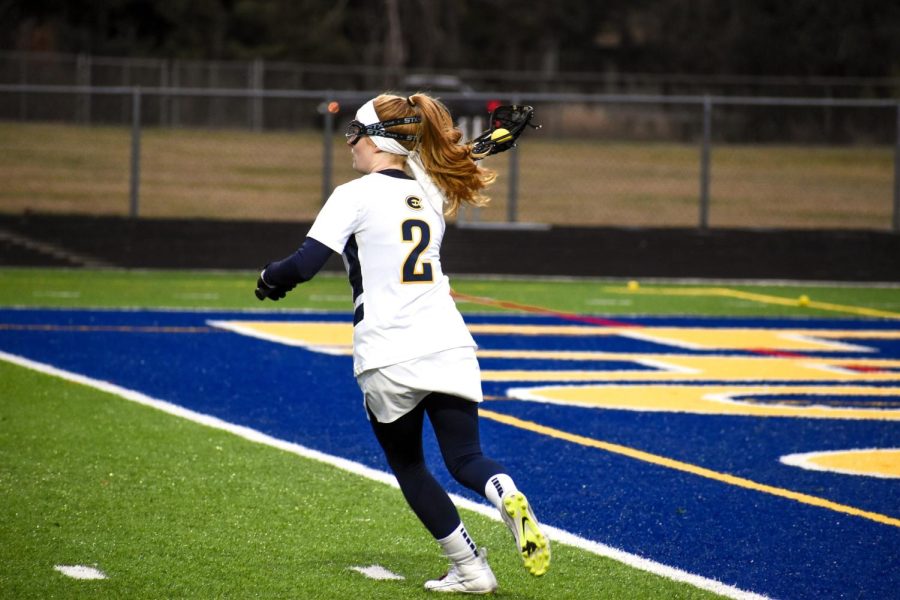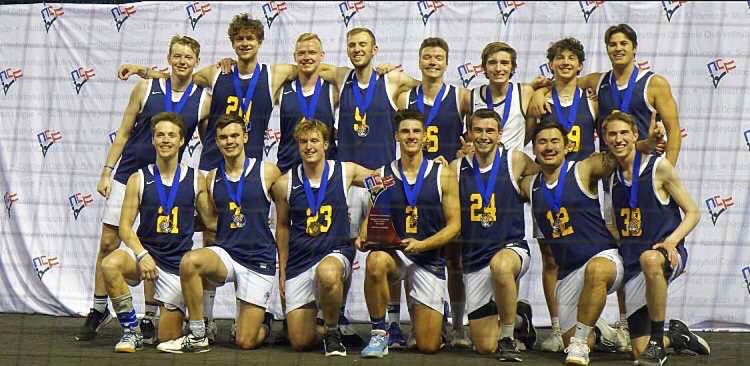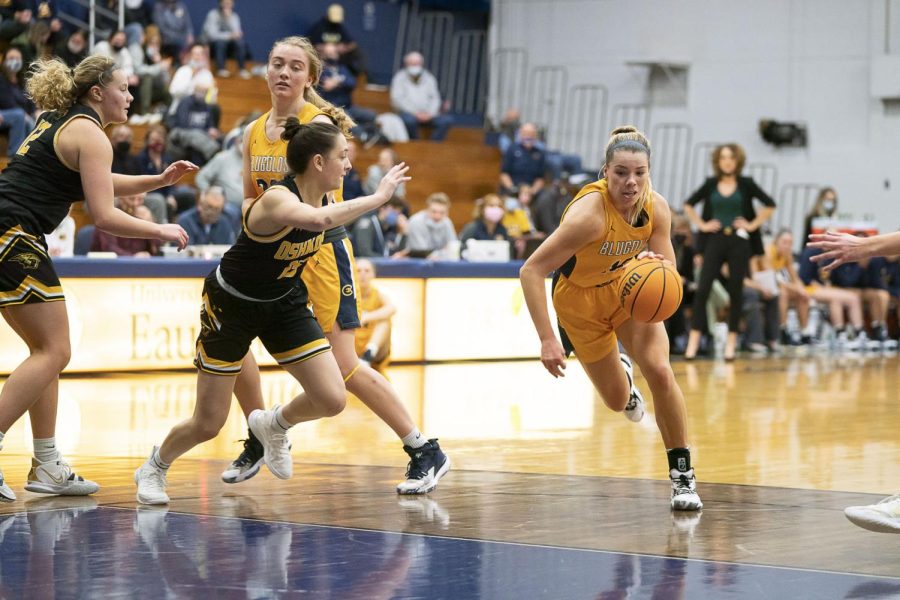 John Koenig
John KoenigIf you were trying to find the Student Radio Initiative broadcasting studio, you likely would have to ask for directions.
Located in a corner of Haas Fine Arts Center, the recording studio is no bigger than a dorm room, with the walls lined with shelves of CDs and broadcasting equipment taking up a large portion of the room.
Though its space is small, SRI has big goals and completed a number of them general manager and junior Nate Detra said.
The most recent addition to SRI is the broadcasting of their station over channel 75 on UW-Eau Claire campus cable.
Web director and senior Jesse Sutherland came up with the idea to broadcast via cable.
“I had been to UW-Stout and their college radio station broadcasts over campus TV,” he said. “I thought if they could do it so could we.”
The idea was discussed within SRI last year; however, the process didn’t begin until this year.
“People were really enthusiastic about it,” Sutherland said.
In order for SRI to get the cable channel, the station had to pay $1,600, Sutherland said. The problem was that the money was not allotted into the SRI budget presented to Student Senate, which funds SRI through student segregated fees.
“We had the concept,” Sutherland said. “But we had no idea we had the capability.”
Student Senate decided to grant SRI a special allocation of $1,600 to fund the cable channel, he said.
The next problem SRI ran into was getting the audio signal across the river from the SRI studio to Towers Hall, where the signal is broadcasted across campus, Sutherland said. Working with campus technology, SRI found it could transfer its signal through old audio lines connected to the footbridge.
“Once it gets across the bridge, a fiber optic system shoots it up the hill,” he said. The audio signal is sent to the same room as the video signal is sent. The two signals are then put together and sent out to campus.
When you see channel 75 on campus cable, you don’t just see a blank screen, Sutherland said.
One side of the screen shows a web cam that broadcasts the student DJs live when they are in the studio. If no one is in the office, the screen is dark, he said.
The other side of the screen is a slideshow of advertisements for the DJ shows on SRI.
Sutherland said SRI hopes channel 75 will bring them more listeners.
“Before we had to solicit our friends to listen,” he said. “But now we hope that some kids in the dorm will be flipping through the channels and see it.”
Another new feature in the SRI studio is Sam the Auto DJ, Sutherland said. Sam the Auto DJ is a program that allows an SRI member to program songs into a play list that play over the station when no one is in the office. Because of Sam, SRI radio can broadcast 24 hours a day.
SRI also has gained the ability to air listeners live on the radio.
Finance Director sophomore Chris Baylor said they also gained the capability to broadcast callers over the radio this semester.
“We love listener interaction,” Baylor said.
Twenty volunteer student DJs work for SRI and have weekly shows, which fill a little over half the schedule, Detra said. Ideally, he said, SRI would like to be more programmed.
“If we could get the whole schedule filled that would be great,” he said.
Sutherland said SRI would also like to broadcast more public service announcements.
“They let people know what is going on on campus,” he said.
Detra said the long-term goal of SRI is to get students back on FM airwaves.
Broadcasting on cable channel was a stepping stone to FM radio, Sutherland said.
“It showed that we are more responsible.”
Both Baylor and Sutherland said for that to happen, SRI has to become more organized.
“With Internet radio, we are much more free-formatted,” Baylor said. “We would have to have to be more structured (for FM).”
Sutherland said FM radio is also more expensive and possesses more rules about airtime.
Baylor said if the station went FM they would be regulated by the FCC, and their programs would be much more regulated.
SRI will eventually be on FM radio, Sutherland said.
“We (SRI) want to be,” he said. “I think we’re moving in that direction.”





